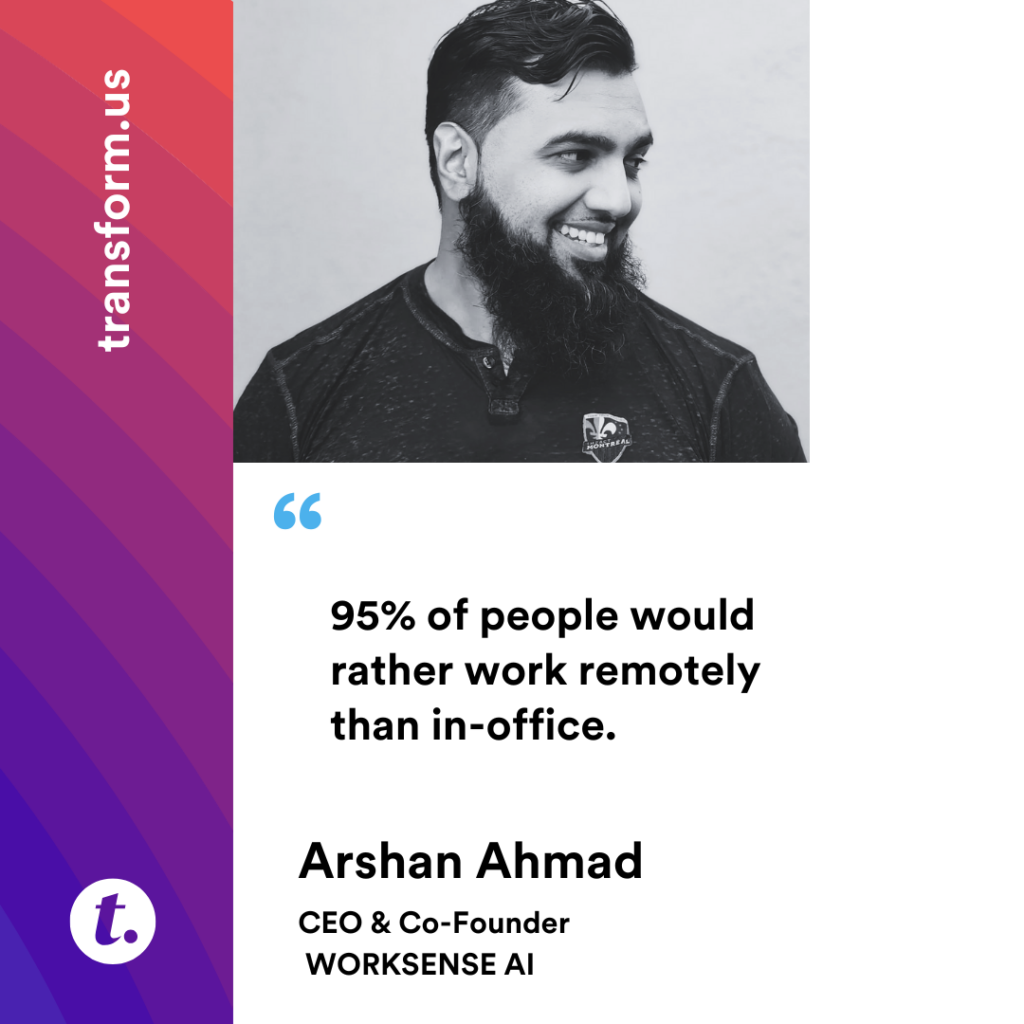
RTO.
Otherwise known as ‘Return to Office,’ but for many employees globally, these three letters have come to look and feel rather Voldemort-esque. That’s because according to FexJobs’ 2024 Remote Work Stats & Trends Report, 95% of people would rather work remotely than in-office.
Despite this and other data that point to remote work as not only the preferred option but a productive one as well for employees, Amazon CEO Andy Jassy recently announced via an internal memo that it will require folks to report in-office five days a week. Jassy’s reasoning, like that of many other CEOs, is that physical proximity fosters collaboration and innovation, leading to increased productivity, which remote work is unable to match.
As it stands, a lot of other companies, such as JP Morgan, Snap, and Salesforce, to name a few, also require their employees to be in the office either full-time or four days a week.
Amazon employees, naturally, are not happy about the announcement. They have created Slack channels to voice their frustration, applied to other roles, and let the press know exactly how they feel.

To be fair, people are justified in feeling concerned about returning completely to office. Beyond Amazon, leaders have been inconsistent regarding their stances on remote work since the pandemic until now, setting false precedents and expectations in the minds of employees; many who championed it as the utopian ideal of working have all but relegated remote work as some temporary interlude that pales in comparison to in-office work. And if we’re being honest, there are some rather ‘dubious’ intentions leaders harbor when it comes to mandating people return to the office.
Right now, the divide between employers and employees regarding RTO seems to be widening. And if we’re not careful about bridging this gap, bad RTO policies will cause you to lose valuable people at your company by lighting the match for a ‘mass exodus’ of attrition. Don’t forget, the same way Amazon followed the lead of other leaders pushing full-time RTO, employees will look to their peers leaving in response to these mandates and follow suit.
To avoid a total meltdown, we must look at what ‘Good RTO’ is.
Let’s face it, employees will have to come into the office in some capacity, but we can make it so it’s not begrudgingly and an experience that avoids blowing up the same way it did in Amazon’s face.
Let’s go over what Good RTO looks like.

So, What Exactly is Good RTO?
Essentially, Good RTO is where you help your employees buy into the REASON they are being asked to return to the office and ease their transition as smoothly as possible by working around individual situations while providing an exceptional employee experience.
Do you want them back in the office because they can be more innovative? Show them why. And if you can’t, be prepared to have that conversation when challenged.
Transparency as a virtue, as it relates to RTO, cannot be stressed enough in this regard. There are a lot of moving parts that go into RTO, and sometimes the corporate language of memos such as Andy Jassy’s can provide more ambiguity than answers. Demonstrating the scope of your RTO and its intricacies helps relieve these pains. Erin Eatough, senior insights manager at BetterUp, says, “The more proactively an organization can provide that transparency… is super helpful.”
Second, understand what exactly is driving the resistance, fear, or anxiety that is preventing employees from getting on board with RTO. It will be different for everybody, but there are common pain points.
Anxiety, for one, looms large for a lot of employees when thinking about coming back into the office. Some people have scheduled work around non-negotiable life situations that remote work’s flexibility allows them to do. Being privy to these personal obligations and being in the office will still let them properly execute these events, which will garner confidence in the physical office’s fidelity.
For example, mothers and caregivers have found remote work to be extremely ideal for their respective life schedules. However, when you abruptly or stubbornly implement RTO with no room for discussion, a.k.a. ‘Bad RTO,’ this can induce large stress levels, which is a recipe for burnout and attrition.
Good RTO also recognizes that not everyone has to be in the office, like mothers who request remote work. Providing flexibility for people for who it makes sense to be remote also factors heavily into an optimal strategy.
Just acknowledging and having these conversations with people about this and other situations where remote work benefits them will put you ahead of most leaders handling RTO.
Why Does Good RTO Even Matter?
Good RTO matters because you’ll save on losing important workforce members. Following the example above, throughout history, mothers in the workforce have actually shown higher levels of ambition relative to their colleagues. Bad RTO will have you driving these key members out of the office.
On a general level, Good RTO will help increase employee engagement, which in turn will lower your odds of regrettable attrition. For instance, when you treat RTO as a mandate or a veiled attempt at better monitoring your employees, you are essentially opening the exit door yourself for your best performers to leave.
In a sense, you don’t have a choice other than to have Good RTO.

A Novel Approach To Calculating Good RTO
While I have not seen a formal RTO calculator, I played with a few variables to land on a pilot formula. Here is what it looks like below:

I chose these variables for a few reasons. Engagement is a fairly broad metric that goes into how active or much of oneself someone brings to their work. Since RTO involves bringing oneself into work, how willing a person is to ‘play ball’ at x company given RTO seems intuitive on its relevance. Often, RTO falls victim to becoming a tool for control rather than to inspire, leading to compromised employee engagement and satisfaction.
Performance, usually judged on a four or five-point scale, is fairly universally scored across companies. I decided on this as a metric because of its widespread use but also because it’s something tangible (as much as it can be). We’re also going to see, because of increased RTO, how performance is judged since many execs have actually gone on record to say that remote work could negatively impact a person’s career.
Finally, attrition, which according to the formula, holds the most weight. We already discussed the warning signs that Bad RTO can have on attrition, especially regrettable. Why attrition, though? Because according to the data, this seems to be the most immediate and glaring aftereffect that simply announcing RTO can have on employees.
Now, how to look at or understand this formula lies not in the score itself but in the comparison between the various workspace setups you have. For example, let’s look at a mock comparison between the RTO scores of a fully in-office, remote, and hybrid setup.
| Annual | In-office | Remote | Hybrid | |
| Average across company | Engagement score | 50% | 99% | 83% |
| Performance review score | 5 | 3.5 | 4.3 | |
| Attrition rate | 21% | 30% | 20% | |
| Formula | 11.9047619 | 11.55 | 17.845 | |
| Change | 8.166667 |
So, based on this trial execution, we see Hybrid as having the highest RTO score. Based on conventional wisdom, attrition would probably be lower in the remote setting and in-office settings, which would be much higher. Engagement, however, aligns with what we already know about these three settings. Nevertheless, the example provided here demonstrates the significant impact of attrition on the score. Performance reviews also seem accurate since managers would be more willing to give favorable scores based on your proximity to the office.
While there is still a lot of testing and tinkering to do on this, I find this to be a useful framework in some capacity to quantify what counts as optimal RTO. Try to play around with this by inputting your company’s actual survey scores for engagement, performance reviews, and your company’s turnover rate for more accurate results!

Companies Who Implement Good RTO
Per Great Place To Work, Cisco, NVIDIA, and Atlassian top the list of coveted places to work. Not surprisingly, they are either fully remote or offer some flexibility on where their employees can work. What is very commendable and in line with what was discussed in a previous section regarding transparency is that Cisco conducted a study partnered with MIT early on in the pandemic to gauge how its employees felt about remote work. Putting aside that the study found hybrid work improved company culture, the fact Cisco took the time and effort to see how its employees felt shows the level of care they have for their workforce. Things like this make it obvious why they rank so high.
One company you may not know that has done RTO well is the autonomous vehicle software startup Applied Intuition. Founded by Qasar Younis and valued at $6 billion, Applied Intuition has stayed mostly onsite since the pandemic’s beginning and continues to be fully onsite as of 2024. While this goes against what many think, they have earned awards for the best places to work for innovation and leadership. While the extent of their exact policies is beyond this author’s scope, we do know that the company has a few quirky ways of doing business internally.
For example, some meeting rooms require everyone to take off their shoes before commencing and wear complimentary slippers for the duration of the meeting. I don’t know if there is data on whether taking meetings barefoot increases productivity because the nerve endings in your feet are less constricted without shoes, but I guess I’ll have to wait like the rest of us before that study is published.
Bonus Section: General Tips for Good RTO
If you are wondering how to conduct large-scale studies into how your employees feel because you lack the resources or don’t feel comfortable making people take off their shoes – that’s fine.
What you can boil down RTO to, or make a comparison with, is good company culture. In other words, the fundamentals of good business. You can boil this down even further to the best way to retain your employees.
I spoke to one of our HR consultants the other day about this, and they offered me four really interesting but fairly actionable insights you can start to employ right away to keep your employees on board regardless of where you conduct your business.
- Being/having a great manager on board: In the same conversation, I was told that at one company, 12 out of 16 employees left due to a toxic manager.
- Inspire confidence in your employees so they believe in the company: Right now, we can rely on surveys for this insight, but more robust measures are needed to ensure this. Needless to say, actions such as the ones above, like Cisco, go a long way in building this confidence.
- Employee development: ‘Are companies investing in me?’ This is what you should have your employees avoid thinking. Take active steps in their development.
- Be proactive about Compensation and Benefits: Think beyond compensation as just paying employees more—educating both employees and managers regarding the nature of compensation is just as important.

Closing
Good RTO is synonymous with good employee experience or good company culture. There are so many ways of doing these things. Even so, many metrics listed above are fairly subjective, and you will struggle to capture them completely through one simple paradigm. What you should think about, regardless of whether you’re in the office or working remotely, is holding a commitment to making sure people coming into work are taken care of and feel like they belong there.
The late Tony Hsieh, the former CEO of Zappos, was a pioneer and trailblazer when it came to ‘delivering happiness,’ whether it was to his customers or employees. Tony took Zappos from a small online retailer to a billion-dollar powerhouse acquired by Amazon. His radical zeal for employee engagement took on such heights that it manifested in many ways. One of which included a kind of tongue-in-cheek ultimatum he gave to new hires dubbed ‘The Offer,’ basically paying a person to quit the company. How’s that for commitment?
So maybe here’s another way to think about Good RTO in the form of this question: Would your employees pass up cold, hard cash and the comfort of their home to work onsite in your office?
About The Author

Arshan Ahmad is the CEO and co-founder of Worksense AI, an early-stage startup tackling employee engagement and retention through cutting-edge artificial intelligence solutions.
With a rich background as a growth lead and product manager at industry giants like Workday and Autodesk and experience with multiple startups, Arshan brings a wealth of expertise in diverse industries. He holds an MBA from the University of Michigan’s Ross School of Business. Beyond his professional pursuits, Arshan enjoys video games and martial arts and served as a prison chaplain in a maximum security federal prison.
Join us in engaging conversations and community as we transform the now and next of work together at Transform 2025.
